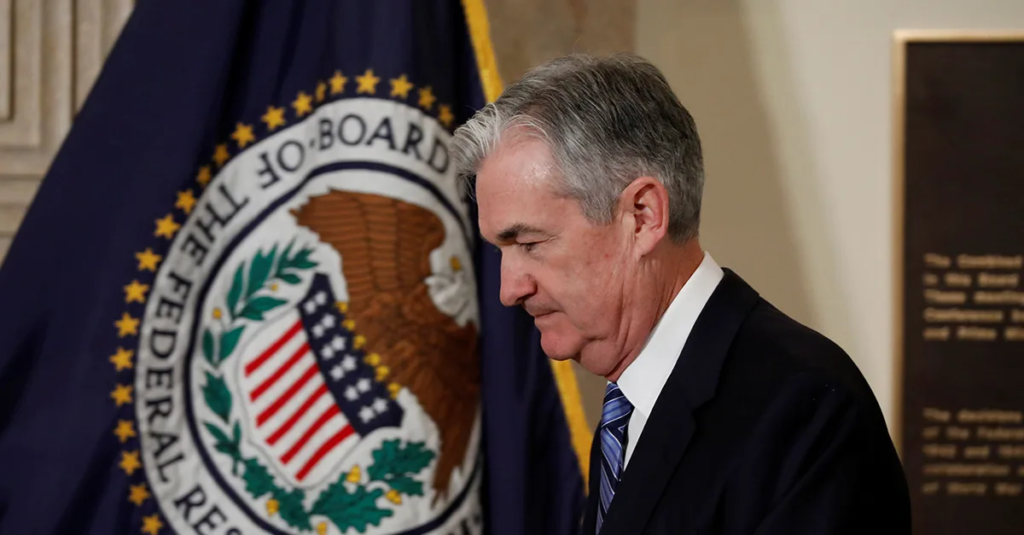Fed dovish outlook rally has captured the attention of investors around the world. Financial markets are experiencing a surge as the U.S. Federal Reserve signals a more cautious approach to interest rate hikes. This shift in tone has fueled a wave of optimism, lifting global stocks, bonds, and currencies. The rally is being welcomed by traders, investors, and analysts as a sign that the era of aggressive monetary tightening may be coming to an end.
This article explores why the Fed’s dovish stance matters, how markets are reacting globally, and what this could mean for investors in the coming months.
Why the Fed’s Dovish Stance Is Important
The Federal Reserve has been at the center of global financial attention since inflation started rising sharply in the post-pandemic world. For months, the Fed raised interest rates to cool inflation, which caused borrowing costs to increase and put pressure on businesses and consumers. However, recent statements from the Fed suggest that the central bank may be nearing the end of its rate-hiking cycle.
A dovish outlook from the Fed usually implies that future rate hikes will be smaller, less frequent, or possibly paused altogether. In some cases, it could even signal a move toward rate cuts if economic conditions weaken. For the market, this is seen as a green light to shift back into risk assets such as stocks, corporate bonds, and real estate.
Lower interest rates mean cheaper borrowing for companies, more spending power for consumers, and stronger profit outlooks for businesses. This environment tends to drive equity prices higher and reduce pressure on financial markets overall.
How Global Markets Are Responding
Equity Markets
Stock markets around the world have responded positively to the Fed’s change in tone. In the United States, indices like the S&P 500 and Nasdaq have posted strong gains. The rally has been led by sectors that are most sensitive to interest rates, including technology, real estate, and consumer discretionary.
In Europe and Asia, similar trends are taking shape. Major indices in Germany, France, the UK, Japan, and South Korea are showing significant recoveries. Emerging markets, which often suffer when U.S. rates are high, are also benefiting. Lower rates tend to ease capital outflows and currency pressures in developing economies, encouraging investment and trade.
Bond Markets
The bond market has also responded to the dovish shift. Yields on U.S. Treasury bonds have declined, reflecting expectations of fewer rate hikes ahead. When yields fall, bond prices rise, offering relief to fixed-income investors who have endured months of falling bond values.
Corporate bond markets are also stabilizing, especially in the high-yield segment. As risk appetite returns, investors are willing to buy bonds from companies with lower credit ratings, pushing prices up and yields down.
Currency and Commodity Markets
The U.S. dollar has weakened slightly as the market adjusts to the likelihood of softer monetary policy. This trend supports global trade by making U.S. exports more competitive and reducing the burden of dollar-denominated debt for other countries.
Commodities like gold and oil have also seen upward momentum. A weaker dollar often boosts commodity prices, and growing risk appetite contributes to higher demand.

What Triggered the Rally
Several factors have contributed to the Fed dovish outlook rally.
First, statements from Fed officials have emphasized a data-dependent approach moving forward. Policymakers have noted signs that inflation is moderating and economic activity is slowing, suggesting less urgency to raise rates aggressively.
Second, recent economic data has supported a softer stance. Inflation reports show cooling price increases, job growth is slowing but still positive, and consumer spending has begun to ease. These signals suggest the Fed’s tightening measures may be having their intended effect.
Finally, the minutes from recent Federal Reserve meetings reveal a more cautious tone. Some members have expressed concerns about overtightening and the potential for slowing growth too much. These comments have reinforced the idea that the Fed is nearing the end of its hiking cycle.
Sectors and Regions Benefiting Most
Not all parts of the market benefit equally from a dovish Fed.
Technology and high-growth sectors are among the biggest winners. These companies rely heavily on future earnings, and lower interest rates increase the present value of those earnings, supporting higher stock prices.
Real estate and construction sectors also benefit, as lower borrowing costs encourage home buying and property development.
In terms of regions, emerging markets are particularly sensitive to U.S. rate changes. Countries in Latin America, Southeast Asia, and Eastern Europe are seeing renewed investor interest, especially in bonds and equity funds.
What This Means for Investors
The current market environment offers opportunities, but also risks. Investors should stay informed and make decisions based on their financial goals and risk tolerance.
For long-term investors, the current rally may offer a good opportunity to rebalance portfolios and add exposure to sectors poised for growth in a lower-rate environment.
Diversification remains important. While U.S. stocks are rising, international markets, especially in Asia and Latin America, may offer better value at this stage of the cycle.
Bond investors may find opportunities in both government and corporate bonds as yields stabilize. However, they should be cautious of duration risk if inflation unexpectedly rises again.
Risks to Watch
Despite the positive market reaction, there are still risks that could disrupt the rally.
One key risk is a resurgence in inflation. If prices begin rising again, the Fed may be forced to resume rate hikes, which could quickly reverse market gains.
Another concern is that the economy could slow too much, leading to a potential recession. While a dovish Fed can support markets, it may not be enough to offset a broad economic downturn.
Geopolitical tensions and global supply chain issues also remain on the radar, with potential to impact commodity prices and investor sentiment.
Conclusion
The Fed dovish outlook rally has brought renewed energy to global financial markets. With central bank officials signaling a softer path forward, investors are feeling more confident that the worst of the monetary tightening may be over.
Stock markets are rising, bond yields are falling, and currencies are stabilizing. While risks remain, the overall mood has shifted toward optimism and opportunity.
As always, investors should stay informed, maintain a balanced strategy, and prepare for potential market shifts. The rally may continue if inflation stays under control and economic growth stabilizes, but flexibility and caution remain key in this evolving environment.
Do Follow USA Glory On Instagram
Also Read :Skills-Based Hiring: Why Abilities Matter More Than Credentials






